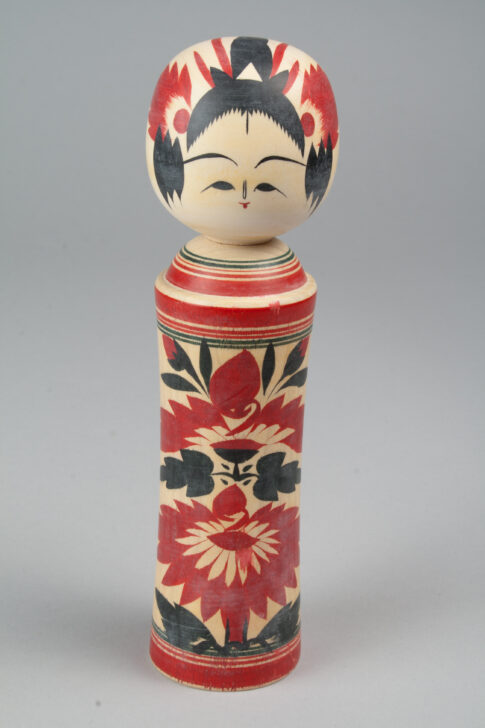Kokeshi Doll
Japanese

Description
Subject Matter:
Kokeshi dolls are handmade wooden dolls that date back to the 19th century and come from the Tohoku region of Northern Japan. The origin and meaning of the word kokeshi is uncertain but it may be derived from the word for wooden (木, ki, ko) or small (小, ko), and the word for dolls (芥子, keshi). Kokeshi dolls have a head and body but no defined hands, legs, or feet. Their faces, clothing, and decoration are all painted on their head and body. Many people believe kokeshi dolls have spiritual significance and can be used to protect children. This kokeshi doll is a so-called traditional type, which has an abstract painted design of a child with a bob-cut hair style and a colorful kimono. More recently, there is a new type called “creative” kokeshi, with more free-form designs. Both traditional and creative kokeshi dolls are used as ornaments, collector’s items, and are bought as gifts or souvenirs in and outside of Japan.
Physical Description:
A wooden doll with two tiers made up of a head and body with no arms, legs or feet. Painted on the head is a face, hair, and a red headdress. The body has red and black horizontal stripes on the top and bottom with a cluster of red and black abstract floral patterns.
Usage Rights:
If you are interested in using an image for a publication, please visit https://umma.umich.edu/request-image/ for more information and to fill out the online Image Rights and Reproductions Request Form.